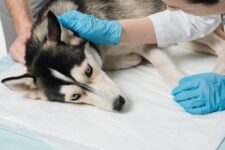
New Pet Vaccination Guidelines Set to Revolutionize Dog and Cat Health Care
New Pet Vaccination Guidelines Set to Revolutionize Dog and Cat Health Care
In a significant shift in pet health management, the World Small Animal Veterinary Association (WSAVA) has introduced updated vaccination guidelines that are making pet owners sit up and take notice. As of April 8, the association now recommends the leptospirosis vaccine as “core” for dogs in areas where the disease is commonly found. Furthermore, the feline leukemia virus (FeLV) vaccine is advised as “core” for young cats and adult cats with outdoor access or those living in environments where FeLV is prevalent.
This pivotal update, which marks the first revision since 2016, comes after the WSAVA Vaccination Guidelines Group (VGG) meticulously reviewed and revised the guidelines beginning in 2022. The comprehensive update not only reflects the latest advancements in canine and feline vaccinology but also provides practical advice for the rational use of vaccines. This ensures that veterinarians and pet owners are equipped with the most current information to make informed decisions about their animals’ health.
Highlights of the Updated Guidelines:
-
Revised Definition of “Core” Vaccines: The new guidelines provide a clear rationale for which vaccines are considered essential for all pets.
-
Maternally Derived Antibodies: A new section addresses how these antibodies affect vaccination timing and effectiveness.
-
Current and Emerging Topics: This updated section delves into the latest research in clinical vaccinology for dogs and cats.
-
Vaccines in Shelters and Sanctuaries: Revised guidelines for managing vaccinations in these unique environments.
-
Focus on Prophylactic Vaccines: The guidelines now exclusively focus on preventive vaccines, removing sections on passive immunization.
-
Vaccination Timing: Recommendations now advise starting selected core vaccines at 26 weeks, refining the previous suggestion of 12 to 16 months.
-
Vaccination Sites for Cats: The updated guidelines specify the best anatomical sites for vaccinating cats to enhance vaccine effectiveness and safety.
Dr. Mary Marcondes, chair of the WSAVA VGG, highlighted the practical layout of the guidelines, “Despite its comprehensive 40-page length, the document is designed for easy reference, featuring succinct tables for quick consultation and sections divided into different topics to aid consultation on specific subjects.”
The newly revised guidelines, which are a result of extensive peer review coordinated by the Journal of Small Animal Practice, are available for download from the WSAVA website. This access provides global reach, ensuring veterinarians around the world can implement these best practices.
These changes are poised to make a profound impact on pet health care, particularly in regions affected by these diseases. By elevating the status of these vaccines to core, WSAVA aims to increase awareness and usage, which could significantly reduce the incidence of these potentially deadly diseases in pets.



